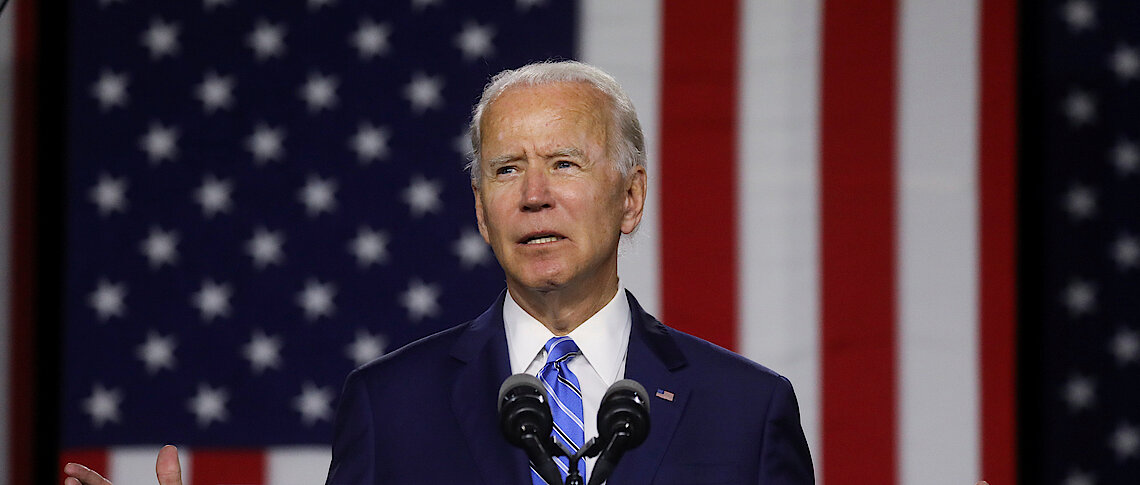Why have we seen the rise of multiple anti-Trump groups related to the Republican Party, such as The Lincoln Project, 43 Alumni for Biden and others?
During the past three and a half years, President Trump has fundamentally challenged time-tested notions of what can be called the cornerstone of the American creed: respect for the law, and the institutional fundamentals of the constitutional setup. In a “manifesto” published in the New York Times in December 2019, the Lincoln Project leaders described Donald Trump’s effect on American democracy as “corrosive,” undermining the rule of law, the Constitution, and those quintessentially American values that make the United States “exceptional.”
These erstwhile Republican campaigners and officials – including Reed Galen, a GOP consultant who had previously worked for prominent Republicans such as George W. Bush and John McCain; George Conway, a Republican and lawyer who is married to Trump Counselor Kellyanne Conway; and Rick Wilson, a GOP strategist and former Defense Department appointee under George H. W. Bush – claim that in this moment, partisanship must take a back seat to removing not only Donald Trump, but also those Republicans who have enabled him to be a threat to American institutions and America’s standing in the world. Both the Lincoln Project and the 43 Alumni for Biden seek to persuade “disaffected conservatives” and to “unite and mobilize a community of historically Republican voters who are dismayed and disappointed by the damage done our nation by Donald Trump’s presidency.”
And they are not alone, Republican Voters Against Trump (RVAT) is another organisation that is looking to harness the anti-Trump energy among Republicans. In short, the stated concern that these groups are responding to is that Donald Trump is a threat to the very continuity of American democracy, the constitutional order as we know it, and the leadership position that that the US has occupied in the world since at least the end of World War II. In more specific terms, however, these groups focus on the president’s botched response to Covid-19, his strange deference to Russian President Vladimir Putin and his disregard for cherished American values and liberties.
Are these groups signs of a radical fragmentation of the Republican Party before the upcoming elections?
It would be inaccurate to say that there is a radical fragmentation of the Republican base. After all, recent polls have found that about 86 per cent of registered voters in battleground states who voted for Trump in 2016 will do so again in 2020. According to a recent New York Times poll, only about 2 per cent of that same group of voters say that there is no chance of them voting for him again, with 6 per cent saying there is “not really any chance” of them supporting Trump.
There is, however, a palpable fragmentation of Republican elites. High-profile conservative luminaries such as Conway and Wilson have walked away from the Grand Old Party and are now backing Biden. What the Lincoln Project and other organisations have managed to do (at the very least) is call attention to the increasing number and variety of dissenting conservative voices within a super-polarised political area. And there is a rising awareness of anti-Trump defectors who can use their visibility to draw attention to Trump’s failures and transgressions.
But there is also some indication of a kind of post-partisan unification. The founders of both the Lincoln Project and the 43 Alumni talk about the need to transcend partisanship and to return to bipartisan collaboration after the election. And other, perhaps less visible, organisations have also emerged, such as the bipartisan legal organisation Protect Democracy which has also attracted prominent Republicans. The common denominator of these organisations and their supporters is agreement that the US president is not above accountability: he can’t categorially deny congressional and judicial oversight, his Attorney General can’t exempt the president’s close associates from criminal responsibility, he can’t corrupt the policy process, and he can’t usurp the powers of the coordinate branches with impunity.
Karen Kirksey, the director of 43 Alumni for Biden, recently said that Congressional Republicans have become a cult of personality, so many traditional conservatives simply cannot find a home in Trump’s GOP.
In any event, after a potential Biden victory, these groups would be in a favourable position to rehabilitate or reorganise the Republican party.
Many of these groups are openly campaigning for Joe Biden. Why is Joe Biden seen as a candidate that Republicans could vote for despite being the Democratic party nominee?
First of all, these groups openly acknowledge that they may be at odds with Biden’s political agenda. But, to quote 43 Alumni’s Kirksey, there is a need to “restore the soul of this nation;” which, incidentally, is also Biden’s unofficial campaign slogan. So that is one of the many factors that motivate the group to back the former Vice President. These groups understand that the American presidency, in the words of the Lincoln Project’s founders, “transcends the individuals who occupy the Oval Office.” So, they see Biden as their best bet to reestablish “order, civility, and decency.”
Another reason why these organisations back Biden, rather than a third-party candidate with whom they might agree on policy, is that the American electoral system makes it very unlikely that third-party presidential candidates can succeed nationally. More importantly, however, the downside of our system is that that third-party candidates almost always guarantee that the party they are closest to ideologically will lose the election because they siphon away votes. With someone like Biden who has been prone to bipartisanship elected to the Presidency, the Lincoln Project and other moderate Republican groups see a realistic chance to be offered a seat at the table.
Ultimately, these Republican opposition groups see a better chance that Biden can restore honor, integrity, and, above all, normalcy to the Oval Office. Just as Chief Justice Roberts recently demonstrated with his unexpected votes in high-profile Supreme Court cases: the prestige of America’s governing institutions should prevail over brute politics.
What segment of the electorate are these groups targeting?
There are at least two targets:
First, the “audience of one,” or the President himself. The Lincoln Project spends big money in the DC advertising and media market, despite it being politically an entirely uncompetitive race, because this is where the President is most likely to see their ads. In fact, their “trolling” tactic has worked, and they have managed to send Trump into a Twitter tantrum. Trump described Conway, Wilson, and Reed (among others) as a “group of RINOS” (Republicans in name only) who failed to beat Obama and will fail to defeat him in November. Notably, the Trump-friendly super PAC Club for Growth also released an ad attacking the Lincoln Project.
Second, they also want to reach disaffected and marginal Republicans as well as Republican-leaning independents – those who disapprove of the president’s performance, style, and personality. Both groups are engaging in advertising in swing states: CNN reports that RVAT spent USD 10 million on advertising in May, and the Lincoln Project has also spent hundreds of thousands on ads in targeted markets.
This strategy is not surprising, since electoral defectors will have a very important role in 2020. Remember that Hillary Clinton lost Wisconsin, Pennsylvania, and Michigan by only about 78,000 votes. Consequently, even a small percentage of Republicans and independents who voted for Trump in 2016 can deliver the presidency to Biden. As I said before, a 2-8 per cent defection rate would be sufficient to flip the White House. Currently, The Economist estimates that even states that have traditionally gone to the GOP in presidential elections such as Georgia, North Carolina, and Arizona are in play for Biden. Florida is also in Biden’s “likely to win” column.
What messages do these groups use to persuade?
One of the most effective recent anti-Trump political ads was produced by Republican Voters against Trump, in which they use President Reagan’s election eve television address, “A Vision for America.” In that 1980 speech, the Republican giant calls for a united, strong, compassionate America; a government of competence and integrity that is responsive to people, and that has the respect of the world and US allies. As the 40th president paints a picture of his vision for United States, the RVAT video features images of children in cages, riot police attacking peaceful demonstrators, Trump’s convicted associates, allies mocking the president, and figures showing the rising number of Covid-19 related deaths, unemployment, etc. The ad concludes with a question: has your party abandoned you?
The LP also uses President Reagan’s iconic campaign ad, “It’s morning in America” with a twist: “Mourning in America”. With imagines of hospitals and the economy in shambles, instead of the Reagan ad’s famous line that “our country is prouder, and stronger, and better” the Lincoln Project’s narrator delivers a powerful indictment of Trump’s America as “weaker, and sicker, and poorer.”
Some of the most effective political ads that this cadre of social media-savvy Never Trumpers have produced reuse familiar tropes from a Republican party prior to Trump’s takeover. This is clearly meant to address those disaffected and marginal Republicans and Republican-leaning independents that can no longer identify with the Republican Party of today.
The Lincoln Project ad campaigns have been remarkably successful and the group is said to be using a strategy based on emotions, not far from the one that Trump himself has used. Is this a quintessentially Republican way of campaigning?
The Lincoln Project’s ads are indeed of the no-holds-barred variety. They are very hard-hitting, even fearmongering. Of course, fearmongering is not expressly partisan, and has been around as a tool of presidential campaigns since at least President Lyndon B. Johnson’s anti-Goldwater ad, in which a young girl plucks daisy petals as she counts down from ten, her voice eventually drowned out by a mission-control countdown followed by a nuclear explosion.
But the language and imagery of some of the most provocative ads produced by the Lincoln Project and Republican Voters Against Trump is clearly not calibrated to the Democratic base.
Indeed, Democratic campaign operatives tend to shy away from offense and tend to delve into nuances, rather than being openly confrontational. By contrast, the Lincoln Project’s “Trump Is Not Well” ad uses the same mockery as the Republican incumbent’s campaign uses against Joe Biden and used against Hillary Clinton in 2016. The ads “100,000 Dead,” and “Chyna” even resort to tropes reminiscent of the horror genre. Studies show that conservatives tend to have a greater physical response to graphic images and sinister sounds – in fact, the more ominous the imagery and the sound effects, the greater their potential impact on conservative voters.
Will these organisations and their advertisements have any effect on the outcome of the election?
It is difficult to say with any degree of certainty whether these organisations and advertisements will have a measurable effect on the outcome of the 2020 election. In fact, political scientists have long doubted whether political advertisements have any effect at all on voters’ choices. Moreover, many commentators, including myself, argue that Trump is making the best case against himself. In 2016, Hillary Clinton proved to be too polarising as the Democratic nominee, which is why a large portion of Trump’s votes were, in fact, anti-Hillary votes. It may well be the case that if Biden does win in 2020, then many of his votes will also be anti-Trump votes.
In the self-proclaimed “first phase” of the Lincoln Project’s campaign against Trump, their goal was not so much to reach disaffected or marginal Republicans, but rather to get under the skin of the president. Which, as I noted before, they accomplished. With this, the group’s leaders argue that they gave Biden “freedom of movement and the green air to do what they need to do.” Whether Biden actually needs their help remains up for debate, since the former VP maintains a comfortable lead in the polls over Trump both nationally and in battleground states.
In a supposed second phase, however, ads targeted at specific markets might have some impact on voter turnout as well as in closing the enthusiasm gap that some say exists between Biden voters and Trump voters.
In 2016, the elections that Trump won, there was also an attempt by dissidents from the Republican Party to oppose his candidacy. Is what is happening now similar to this process or are there differences?
There are clear differences. The most important difference being fact that we have had a little over 3.5 years of Trump as president. In 2016, Trump ran as a disruptor, now he has to run on his record; and it is precisely that record that is giving the Lincoln Project, 43 Alumni, Republican Voters Against Trump, and other organisations so much fodder for their attack ads.






